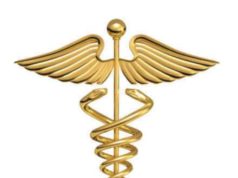
Introduction
Electronic Medical Records (EMRs) have been a transformative technology in the healthcare industry. EMRs refer to the systematic collection of patient medical data in an electronic format that can be shared between healthcare providers. They have replaced paper-based records, which were often incomplete, difficult to organize, and challenging to share. In this article, we will discuss electronic medical records and how they have transformed the healthcare industry.
What are Electronic Medical Records?
EMRs are a digital version of a patient’s medical history. They contain all the information found in paper-based medical records, such as diagnosis, medications, allergies, and lab results. One of the advantages of EMRs is the ability to share the data with multiple healthcare providers, making it easy to coordinate care between different providers.
EMRs are also customizable, which means healthcare providers can add specific notes and observations about each patient to create a comprehensive medical history. This feature is particularly useful in a hospital setting, where multiple doctors may treat the same patient.
Advantages of Electronic Medical Records
There are numerous advantages of electronic medical records compared to paper-based records.
Improved Patient Safety
EMRs have significantly improved patient safety. They reduce the risk of human error, which often includes illegible handwriting and incorrect data entry. EMRs are also equipped with drug interaction alerts that warn medical professionals of potential medication conflicts, reducing the risk of medication errors.
Ease of Access
EMRs allow healthcare professionals to access patient information instantly from any location. This is particularly useful in emergency situations where quick access to patient data is essential. EMRs eliminate the need for healthcare professionals to manually search for paper records, saving valuable time and reducing the risk of medical errors.
Improved Coordination of Treatment
EMRs provide an easy way for healthcare providers to share medical information between themselves. This improved communication helps coordinate treatment efforts and reduces errors in diagnosis and treatment.
Cost Savings
EMRs also result in cost savings for healthcare providers. They streamline administrative processes, such as billing and insurance claims, reducing the need for manual labor and eliminating paperwork. Additionally, EMRs reduce the number of unnecessary tests and procedures that are often performed because medical professionals lack complete patient information.
Disadvantages of Electronic Medical Records
Despite the many advantages of electronic medical records, there are also some disadvantages that need to be considered.
Cost
Switching to EMRs requires significant financial investment in hardware, software, and staff training. Smaller healthcare providers may find it difficult to justify the expense of implementing EMRs.
Security Concerns
EMRs contain sensitive patient information, making them a target for hackers. Healthcare providers must invest in secure systems and staff training to prevent data breaches.
Learning Curve
EMRs have a steeper learning curve than paper-based records. Medical professionals who are unfamiliar with the technology may require significant training to become proficient in using EMRs.
Conclusion
Electronic Medical Records have transformed the healthcare industry, providing numerous benefits to both healthcare providers and patients. They have significantly improved patient safety, ease of access to medical information, coordination of treatment, and cost savings. However, the technology also has some disadvantages, such as cost, security concerns, and a steep learning curve. Nevertheless, as healthcare technology advances, EMRs have become an essential component of modern healthcare, and their importance is only likely to increase.
























